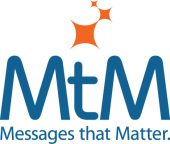More than twenty-three centuries ago, Aristotle stressed the importance of understanding categories, things and actions and how to organize them. His ideas changed forever the way people think about the world, including how to market B2B software and technology in the 21st century. Effective product categorization is essential for you to successfully market your B2B product or service. You can easily categorize your product – without knowing a word of ancient Greek – by using your knowledge of the prospect’s key problem and your product’s ability to respond to the problem. It’s a process I call the “Three Whats.”
Effectively identifying and communicating your product’s category enables potential buyers to quickly understand how they might benefit from your product. Without framing your product and its appeal within the proper category, product awareness may not translate into consideration and purchase. Prospects may know you exist, but fail to see the relevance to their needs. The following “what” questions will help you develop an effective categorization strategy that will, in turn, help your prospects focus on your product’s relevance to them:
- What is it?
- What does it do?
- What does it deliver?
What is it?
B2B prospects need to recognize your product category; otherwise confusion reigns. Ideally, you can place the product into an existing category or one that represents a natural evolution. Most people find it difficult to understand new categories without assistance. If you attempt to define a new category, expect to spend a lot of money. And you still run the risk of getting out ahead of the market. When this happens, you become a missionary not just for your product but the category. Sales cycles are sure to extend well beyond the norm, and late-arrival competitors may reap the harvest of your hard work.
Category descriptions typically contain two or three words. Examples include:
- Customer relationship management (CRM)
- Corporate Performance Management (CPM)
- Relational database management
- On-line Analytic Processing (OLAP)
- Accounting software
- Enterprise resource planning (ERP)
Former CRM market leader Siebel, now owned by Oracle, is an example of the pitfalls of creating a new product category. Let’s go back to the dot-com craze when Siebel was not content to dominate CRM. Instead, Siebel declared it provided e-Business solutions. Most of the target market was just beginning to understand CRM, but still didn’t have a clear idea of what CRM actually did or its benefit. Buyers back then had no clue what Siebel was talking about when it used the phrase “e-Business” in its marketing. That became a problem for Siebel, because while the company probably wanted to say it could do almost anything on the Internet, “e-Business” was at best confusing or even irrelevant to prospects. In reality Siebel just provided CRM solutions – sales force automation, call center service, customer and partner self-service, etc. – via the Internet. Eventually Siebel retreated to its product category – CRM. Why? Corporations didn’t have a line-item capital expenditure for e-Business, but they did for CRM.
What does it do?
A short description of your product’s functionality can help prospects imagine how people in their organizations might use the product, but it is still not getting to the heart of the matter. For example, a vendor of word processing software might claim that its product creates great looking documents in minutes. Although such a statement might seem to express a benefit of word processing software, it actually describes an advantage over other ways of producing documents.
B2B marketers frequently make a critical error by confusing what a product does – its advantage – with what a product delivers – its benefit. Naturally, prospects need to know the advantages of your product or service.
What does it deliver?
A good answer to “what does it deliver?” brings you very close to a positioning statement. By describing the one important benefit that prospects will obtain from your product or service, you describe why they should care enough to consider purchasing it. For example, in the case of word processing software, the benefit of producing great looking documents is better communication. Don’t assume that prospects will make that connection on their own.
Make the benefit clear to them, even if it seems obvious to you.
Many companies make the mistake of letting the prospect figure out the benefit on their own. Instead, make it short, simple and sweet – tell them. Otherwise, they won’t buy from you.
By going through the categorization process several times, you can create multiple benefit statements, each of which may have the potential to serve as your positioning statement. As you refine and evaluate your benefit statements, they become more powerful in communicating your unique positioning. Whatever statement you finally select, make sure you execute it in your marketing communications so potential buyers can instantly understand what your product is, what it does, and what benefit they’ll derive from it. Do that, and you’re on your way to marketing success.
